Does Hydrocotyle Tripartita Need CO2
One of the most appreciated plants for its green leaves is Hydrocotyle Tripartita. However, it is not easy to grow this beautiful plant, especially when it comes to the process of CO2. A lot of aquarium growers face problems related to Hydrocotyle Tripartita care, including its slow growth, the leaves melting, and algae growth.
Here, we will look closer at Hydrocotyle Tripartita, its features, uses in aqua scaping, and last but not least, whether it requires CO2 supplementation – how to grow hydrocotyle tripartita. We will give you valuable advice on how to cultivate it, how to take care of it, and how it differs from very similar Hydrocotyle Sibthorpioides.

how to grow hydrocotyle tripartita
Hydrocotyle Tripartita
Hydrocotyle Tripartita is commonly known as Hydrocotyle Japan in the trade circle and is a fascinating aquatic plant recognized for its foliage and low maintenance. Originally from New Zealand and some parts of Australia, it is a perennial herb that has captured the fancy of aquascapers by providing amazing underwater views.
Family
Hydrocotyle Tripartita is a plant of the Apiaceae family, of which carrots, parsley, and celery are members.
Traits
- Appearance: Hydrocotyle Tripartita has distinct clover-shaped leaves and produces dense and low-growing thicker when provided with the ideal environment. The leaves are usually bright green and the size depends on the growing environment of the plant.
- Growth Habit: This plant is a fast-growing plant that can easily carpet the aquarium bottom if provided with sufficient light and nutrients. It can also be grown as an epiphyte, where it clings to structures or hardscapes in the aquarium.
- Versatility: Aquatic plant Hydrocotyle Tripartita can fit into any style of aquascape due to its amazing versatility. It is best used as the foreground or middle ground plant, providing the look of a carpet or neat bushes.
- Care Requirements: Quite low in maintenance requirements, this plant requires medium to high light conditions and would grow better under CO2 injection. Fertilization is also advised regularly to enhance the growth of the plants.
Types
Thus, there are no clear divisions into ‘types’ of Hydrocotyle Tripartita but differences in growth patterns and form of the leaves can depend on environmental conditions or cultivation conditions.
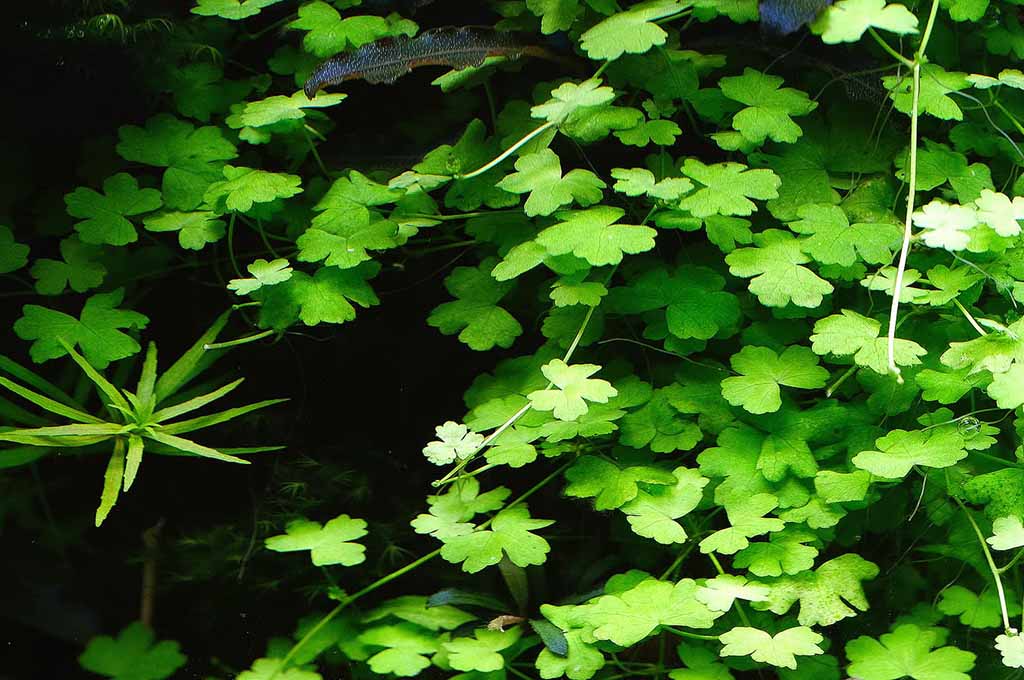
hydrocotyle tripartita care
Hydrocotyle Tripartita Aquascape
Hydrocotyle Tripartita is known for its diverse uses in an aquascape since it can be used in different sections of the aquarium. The plant has become popular among aquascapers due to its clover-shaped leaves and fast-growing nature.
Common Uses in Aquascaping
- Foreground Carpet: In the best light and with high CO2, Hydrocotyle Tripartita may form a beautiful, tight carpet on the foreground. It has small leaves, which makes it an ideal option for small textured plants when placed among large plants.
- Midground Bush: With lower light intensity, the plant blooms higher, which makes it possible to create beautiful bunches in the bushes of the mid-region. This can give the aquascape another dimension and make it look quite stunning.
- Epiphyte: Hydrocotyle Tripartita can be mounted to hardscape features such as driftwood or rocks, which will add stunning looks to the tank.
Tips for Using Hydrocotyle Tripartita
- Control Growth: Although the plant grows at a relatively fast pace, which is advantageous when seeking to make carpets, it acts as an invader if not controlled. Regular pruning is essential.
- Lighting and CO2:Lighting should be good and also CO2 should be supplied to support the growth and formation of the carpet.
- Experiment with Placement: It is recommended to try various types of placements to achieve the optimal aesthetics of the aquascape.
- Combine with Other Plants: Hydrocotyle Tripartita can be used as a filler for many plants. It is best recommended that it be combined with other textures and opposite colors.
Example Aquascape Layouts
- Dutch Style: In the foreground, place Hydrocotyle Tripartita to provide a green carpet to the layout, and then add tall plants with red leaves in the middle ground.
- Iwagumi: Hydrocotyle Tripartita can be used as the epiphytes on the rocks to cover the landscape and give a natural impression.
- Nature Aquarium: For example, use Hydrocotyle Tripartita in a high-density manner that creates the appearance of an underwater ecosystem.
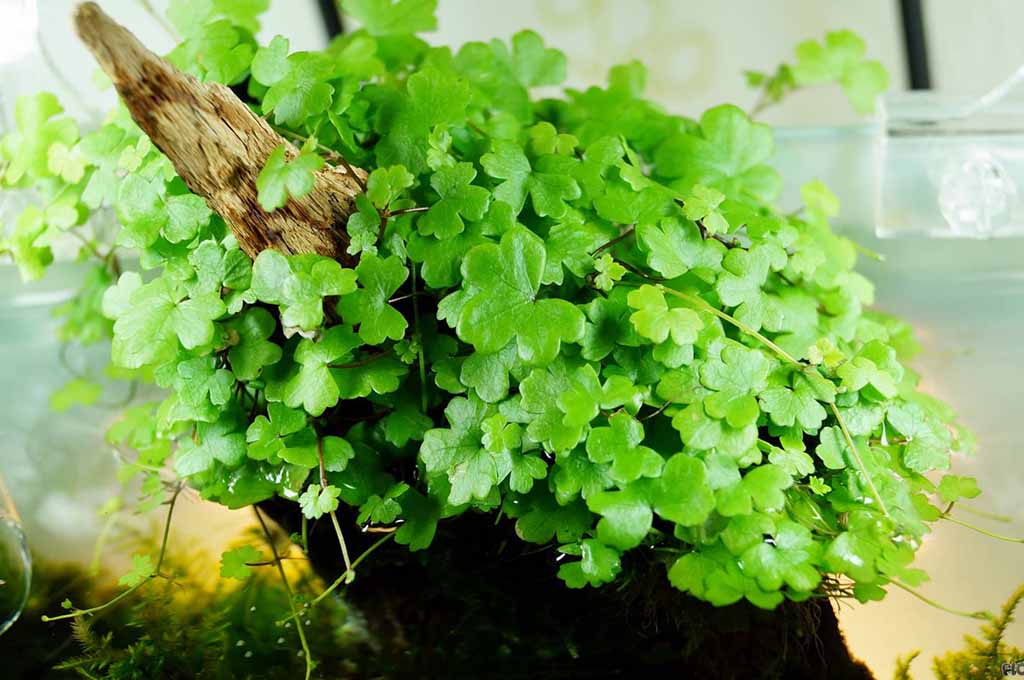
hydrocotyle tripartita growth
How to Grow Hydrocotyle Tripartita
Does Hydrocotyle Tripartita need CO2?
Although not essential, the use of CO2 causes a much-enhanced growth and overall aesthetic impression of Hydrocotyle Tripartita. The benefit of CO2 is that the plant becomes denser, has smaller leaves, and forms a better carpet. Without CO2, it grows taller and has less branching.
Grow tutorial of Hydrocotyle Tripartita in Aquariums
Lighting
- Intensity: High to moderate light is ideal for promoting dense growth.
- Spectrum: A balance of red, blue, and green wavelengths is beneficial.
Substrate
- A nutrient-rich substrate is preferred, but not essential.
- The plant can also be grown as an epiphyte on the landscape.
Water Parameters
- Temperature: 20-28°C (68-82°F)
- pH: 6.0-7.5
- KH: 2-8 dKH
Fertilization
- Regular dosing of liquid fertilizers is recommended.
- Root tabs can also be used to provide additional nutrients.
Pruning
- Regular pruning is essential to maintain the desired shape and prevent overcrowding.
Propagation
Hydrocotyle Tripartita is easily propagated by taking stem cuttings. Cut a portion of the stem with a few leaves and replant it in the substrate.
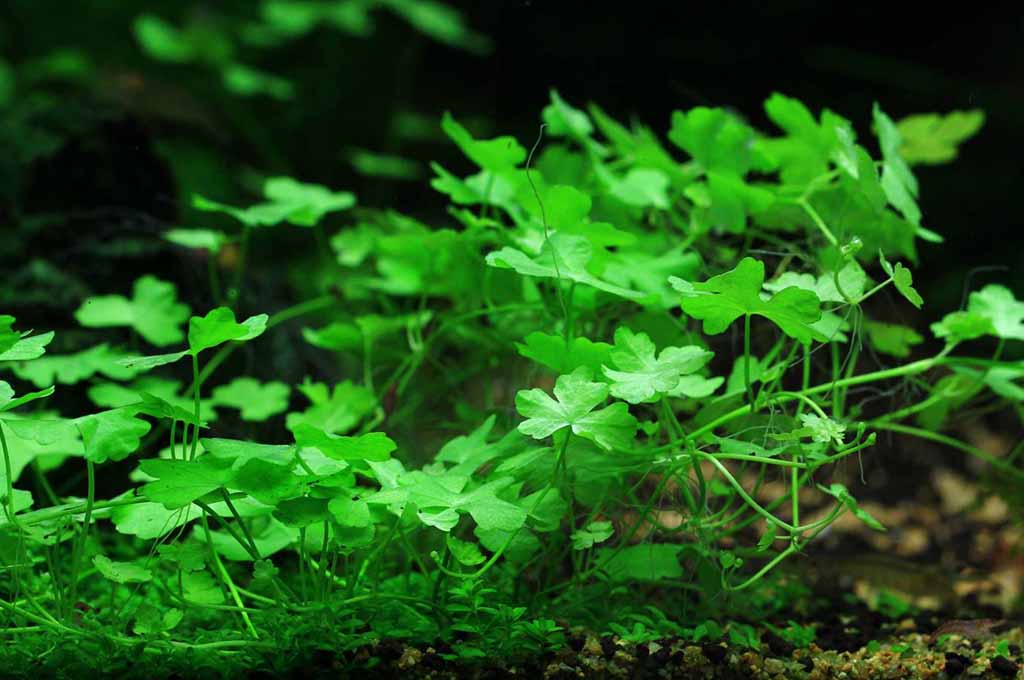
hydrocotyle tripartita
Hydrocotyle Tripartita Care
- Lighting: Moderate to highlight intensity is suitable for dense growth.
- NPK: Although not essential, the CO2 accelerates growth and improves aesthetics.
- Fertilization: It’s advisable to feed foliar frequently in liquid fertilizers.
- Pruning: Trimming is necessary to achieve the recommended size and avoid congestion within the structure.
- Propagation: It is quite easy to propagate through stem cuttings.
Hydrocotyle Sibthorpioides vs Tripartita
| Feature | Hydrocotyle Tripartita | Hydrocotyle Sibthorpioides |
| Growth Habit | Rapid grower, forms dense carpets or midground bushes | Slower grower, forms bushier clumps |
| Leaf Shape | Clover-shaped, small leaves | Kidney-shaped, larger leaves |
| Light Requirements | High to moderate | Moderate to low |
| CO2 Requirements | Beneficial, but not essential | Not necessary |
| Care Difficulty | Easy to moderate | Easy |
Key Takeaways
Hydrocotyle Tripartita is one of the most popular water plants that can be used in any aquarium. Though CO2 is beneficial in its growth, it is not necessary for the plant. For it to remain green and healthy, adequate lighting, feeding, and pruning should be done regularly. Regardless of whether you decide to place a rich carpet or exquisite bushes, Hydrocotyle Tripartita will provide a fascinating complement to your aquarium.

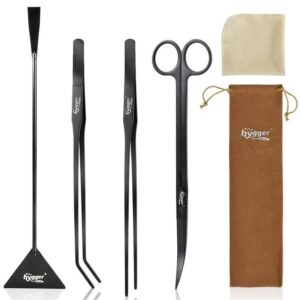
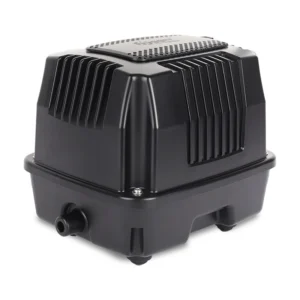
Leave a comment